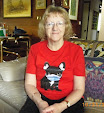Tuesday, 11 September 2007
Reply to Ann, who asked about types of cards.
Ann wants to know more about the kinds of cards that are collected. My introduction at the beginning of this blog explains a bit, but perhaps not enough. Swap cards can be single cards from a deck of 54 (or is it 56?), which have any of the four suites on the back (clubs, spades, diamonds or hearts), jokers and sometimes blank backs. Other swap cards have been produced by various companies such as Coles and Woolworths in earlier years, and these usually have blank backs or a brand name printed on them. Decks of playing cards are often produced by companies as advertising material, particularly airlines such as Qantas, who hand them out to passengers on long flights for something to do! Some collectors specialise in collecting advertising cards alone.
Saturday, 11 August 2007
Saturday, 9 June 2007
Next lot of cards will be the Cats.
I have now completed posting my Doggie swap cards - hope you have enjoyed looking at them. Next, I will start scanning the Cat cards, and as before, will post a few whenever I can. I'll try to post on a more regular basis...there are several thousand cards to be scanned and downloaded, so it will take quite a while! I wonder if there is any limit to what one can post on blogs. I've seen some incredibly long blogs with little movies on, and 'everything that opens and shuts', so it seems there is no limit. Guess I'll find out one day if Blogger/Yahoo suddenly decide I'm over my limit!
Friday, 8 June 2007
Dog swap cards (3)
Thursday, 7 June 2007
Apologies for lack of posting!
As usual with me, I start things off in an explosion of enthusiasm, then I get sidetracked by other things happening in my life! I have had my card album sitting under the computer desk for months, meaning to do some more scanning, but time gets away. Maybe this coming weekend which is a long weekend here in Victoria, I will get the time to sit down and scan a whole lot of pages, and have them on my PC ready to post on this blog on a regular basis.
Fay asked how to tell the difference between Coles and Woolworths swap cards. Both brands had plain white backs, although some of the Coles cards had the Embassy brand printed on the back. Coles cards had many designs over the years, but Woolworths didn't have so many. The Woolworths cards also had a particular border around the picture on all their cards. The next lot of cards I scan will feature two of these cards, and I will point them out so you can see what this border is.
Fay asked how to tell the difference between Coles and Woolworths swap cards. Both brands had plain white backs, although some of the Coles cards had the Embassy brand printed on the back. Coles cards had many designs over the years, but Woolworths didn't have so many. The Woolworths cards also had a particular border around the picture on all their cards. The next lot of cards I scan will feature two of these cards, and I will point them out so you can see what this border is.
Friday, 2 March 2007
Saturday, 24 February 2007
Birds - Pheasants.
Birds.
Friday, 23 February 2007

These are the last of my bird swap cards. Next time I will return to the dog cards which I started on previously. I should have stayed on one theme to be consistent, but got sidetracked! The three cards on the bottom row have a fourth one (yellow) which I don't yet have in my collection. Hope to find that one at the next Card club meeting - I hate missing one of a set!
Saturday, 10 February 2007
Friday, 9 February 2007
Dogs, dogs and more dogs.
Saturday, 3 February 2007
Coles 'dog' swap cards
Dog Pairs
Bird cards
Subscribe to:
Posts (Atom)
































